All you need to know about Cahills Crossing
Posted on 15 October, 2025 in Arnhem Land, Birdwatching, Cobourg, Environment, Fishing, Kakadu, Photography, Private Charter, Top End Locations, Tours, Wet SeasonThis river crossing is famous for its high-water flow and abundance of saltwater crocodiles. Kakadu National Park is home to more than 10 000 crocodiles, and Cahills Crossing is one of the best places to spot them. Impassable at high tide, the crossing has become well known for misadventures and footage of vehicles getting washed off the road. You can see many overturned cars scattered along the edge of the causeway. With numerous croc attacks at this site over the years, this is not the place to be complacent or take unnecessary risks.
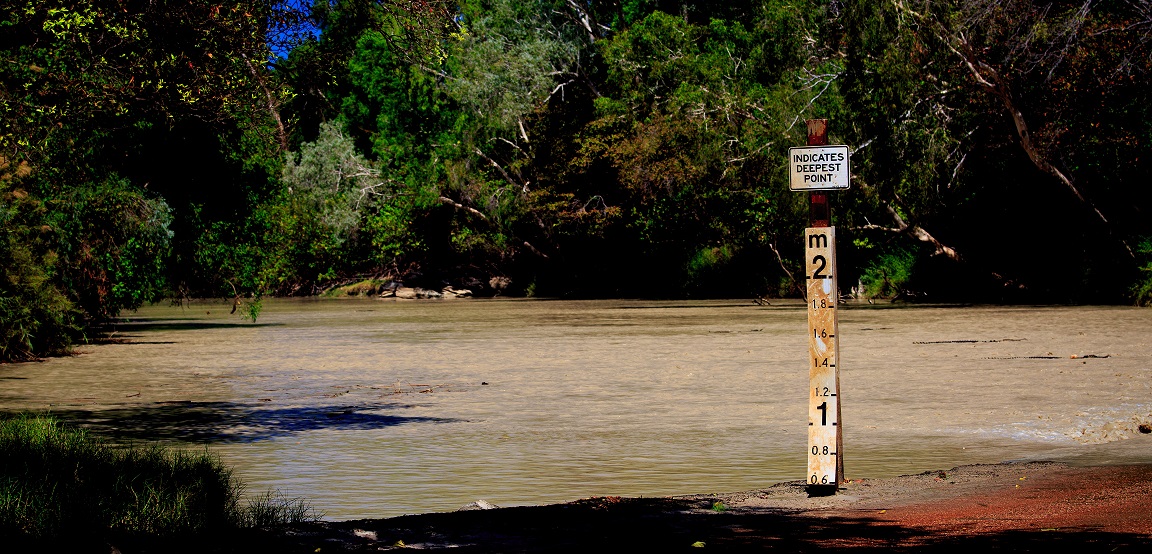
As a tour operator on the Cobourg Peninsula, this notorious crossing is one that Venture North has crossed many times a week for over 15 years. Not for the faint of heart, Cahill's Crossing is one of the highlights for our guests on tour with us. Our 5-Day Kakadu, Arnhem Land and Cobourg Peninsula Tour does this crossing as we journey to our Coastal Camp at Ganuk Barlu National Park. (Cobourg Peninsula)
Where is Cahill’s Crossing?
A 3.5-hour drive East of Darwin, Cahills Crossing is located on the East Alligator River in Kakadu National Park. From Jabiru, the main settlement in Kakadu National Park, it’s a half hour drive. On the way make sure to check out Ubirr, the rock art-filled outcrop that looks over the East Alligator River. The narrow concrete bridge, only a few meters wide, offers the only road access point between Kakadu National Park and Arnhem Land.
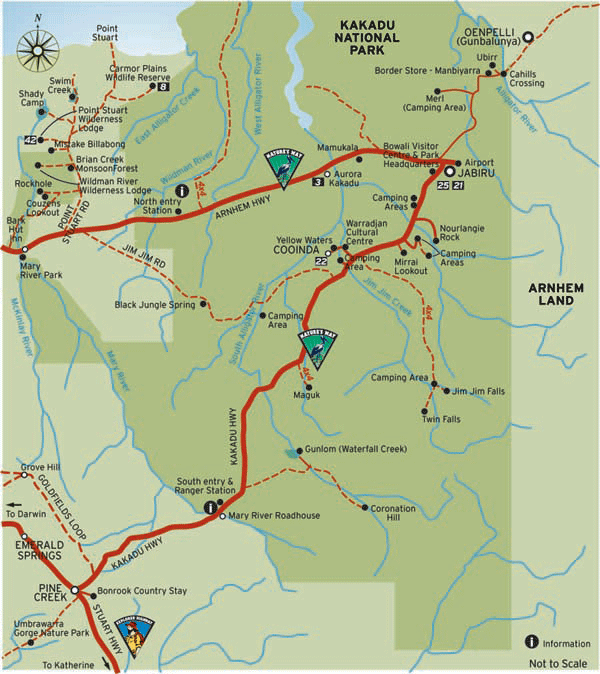
Once over the other side of Cahills Crossing, you’re in the Arnhem Land and on the Oenpilli Road. It’s a 16.5km drive to Gunbalanya, the main settlement in the western Arnhem Land. Permits from the Northern Land Council are required to enter Arnhem Land and pass through to the Garig Gunak Barlu National Park on the Cobourg Peninsula.
How did the crossing get its name?
Cahills Crossing is named after the legendary buffalo hunter Paddy Cahill (1863-1923). One of the first European pioneers of the region. He was initially attracted to the region by reports of up to 60 000 buffalo running wild on the plains of the Alligator River. Cahill established a cattle station in the area and was probably one of the most famous men in the Northern Territory during this time, with even Banjo Paterson haven written of him in The Cycloon, Paddy Cahill, And The G.R. in 1898.
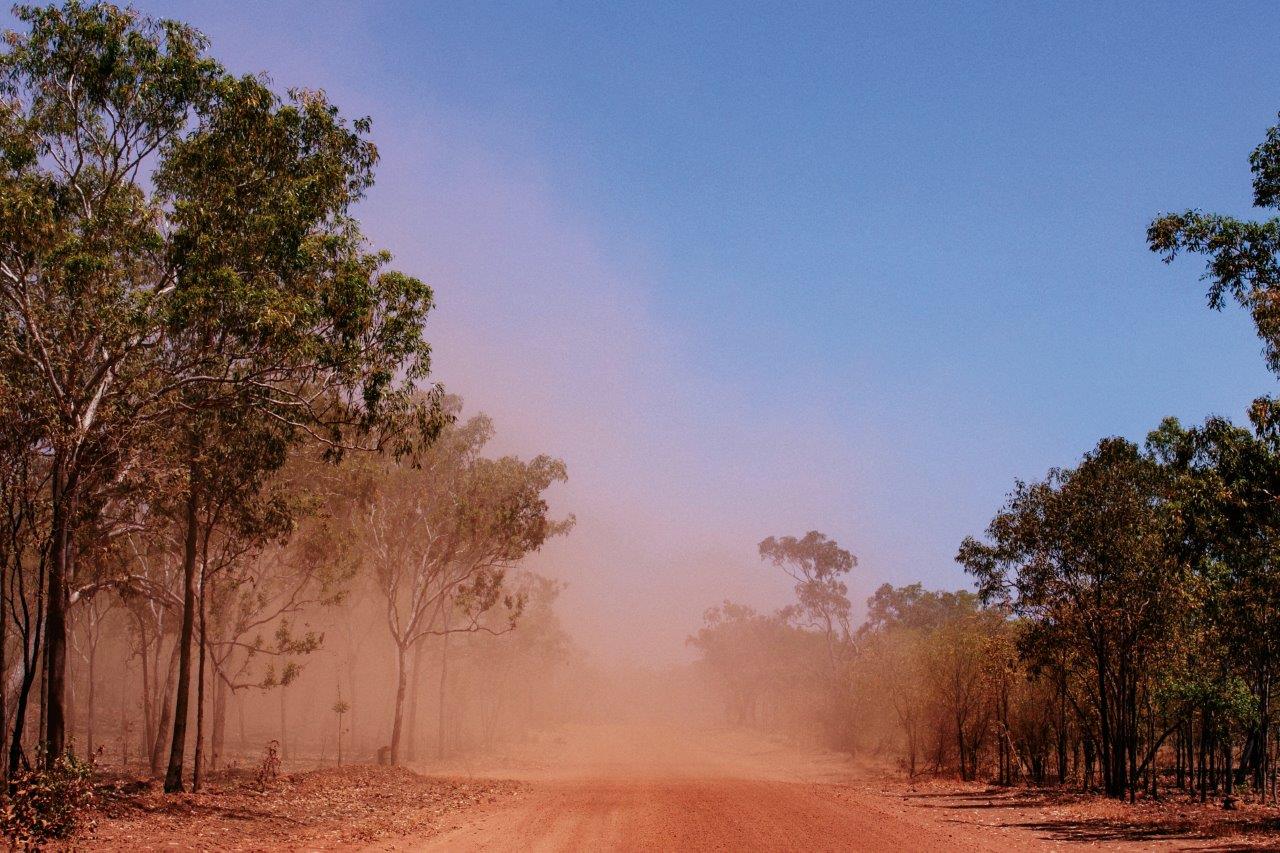
And the man who once goes to the Territory always has a hankering to get back there.
A.B Paterson The Bulletin, 31st December 1989
When is the best time to cross?
One of the most popular questions we get asked! Our answer always is "Check the tides" Although Cahill's crossing is about 50km from the river mouth, it is very tidal, and the best time to cross is at low tide. Always work your travel plans around the peak of the low tide; however, you can usually cross safely for a couple of hours on each side of this time.
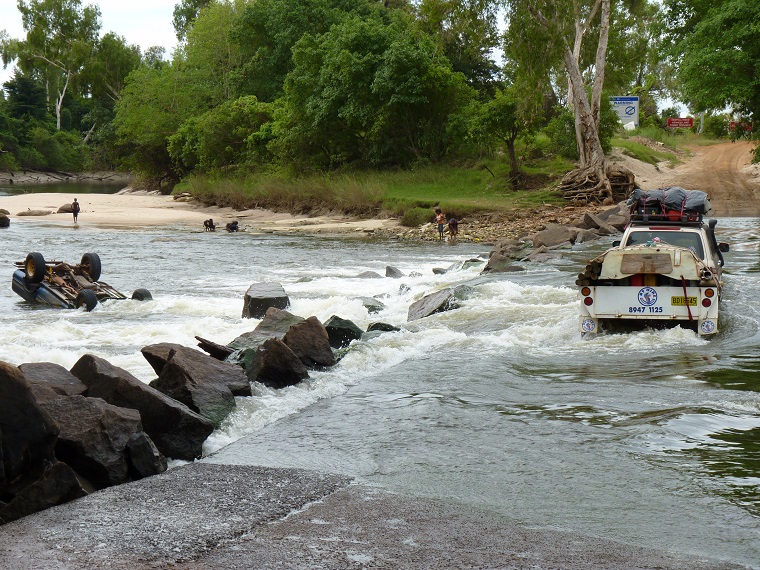
We use Willy Weather to get our tide information for all our crossings. Unfortunately, during the monsoonal rains of the wet season (November to April), Cahills Crossing becomes impassable and will close. Looking at the Kakadu Access Report is an easy way to check if it's open, as it gives the most up-to-date information on the region. Remember, you'll need a permit to enter Arnhem Land through the Northern Land Council. You'll also need to ensure you are in the correct type of vehicle. We recommend a high-clearance 4WD with a snorkel.
What is there to see?
The Saltwater Crocodile (Crocodylus porosus)! The world's most giant reptiles gather in large numbers at Cahill's Crossing as they are guaranteed a decent meal. (Of the fish species, that is!)
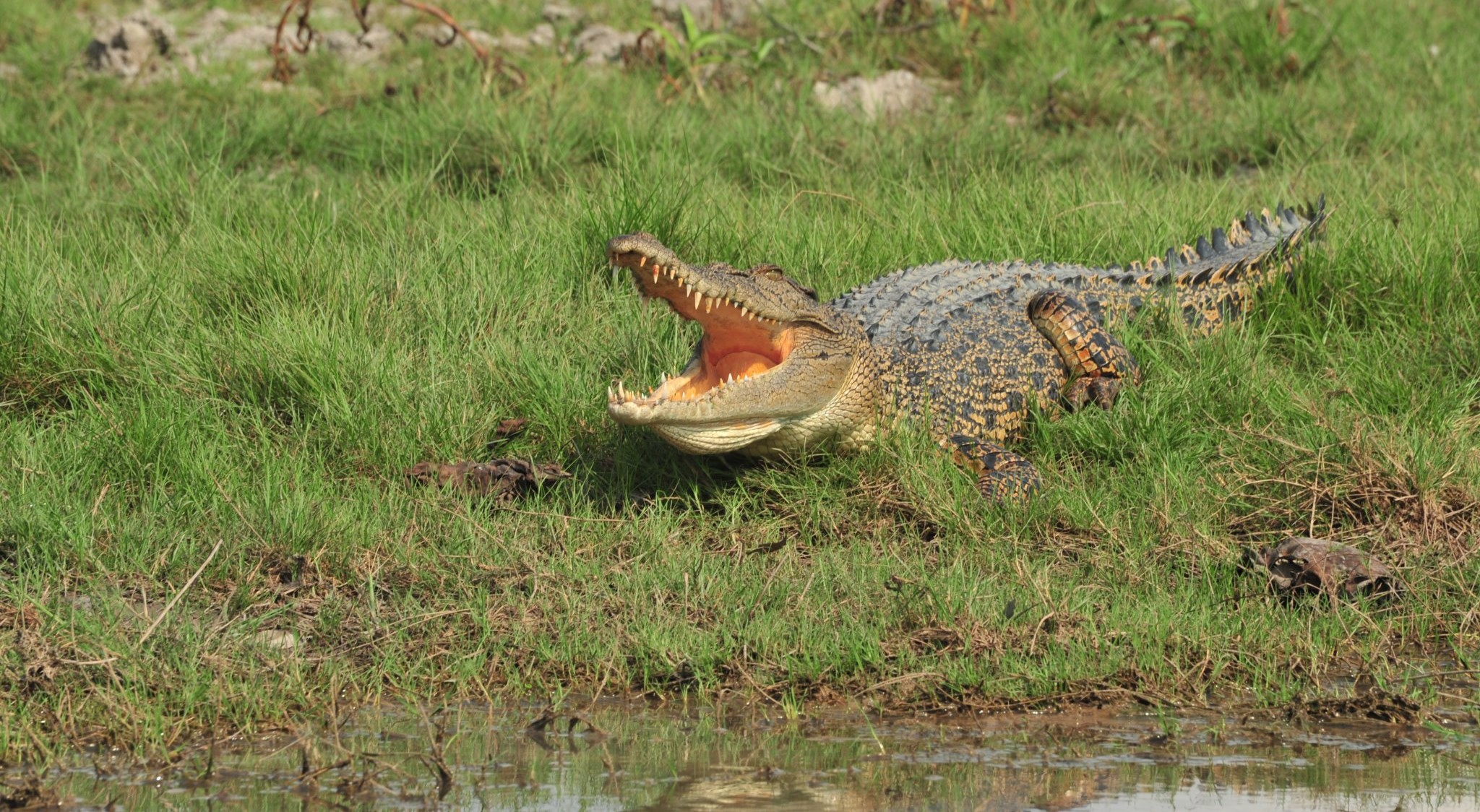
Feeding on mullet and barramundi that sweep upstream, with the full tides, the best months to spot crocodiles here are from July to November. Their numbers peak in September as the dry season ends, waterways and floodplains dry up, and freshwater flow decreases. With enough fish around the crossing, many Crocodiles can co-exist, and you can see between 5-9 crocs per kilometer. Once the rains start and the river begins to flow again, Crocodile density drops by almost half at the crossing as they disperse with the onset of flooding. You can get the odd resident croc frequent the area during this time. Those known well by locals and rangers; however, they will also travel up to 140km away to feed at other locations.
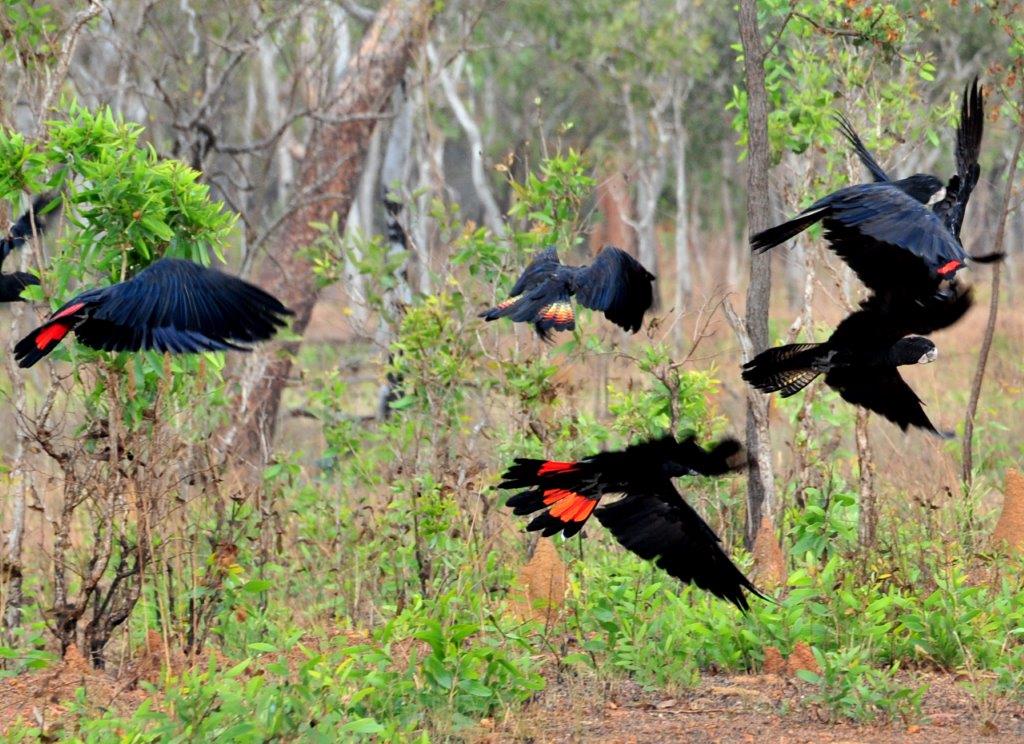
The East Alligator River is known to be one of the richest biological regions in Kakadu National Park. Apart from the ever-present crocs, almost 1500 species of plants have been recorded in the area, including mangrove, grassland, monsoon forest, woodland and scrub communities. More than one-third of the bird species in Australia have been sighted here in the region, and a recorded 46 species of fish represent about a quarter of all recorded Australian native freshwater fish. There is plenty to take in here aside from the crocodiles.
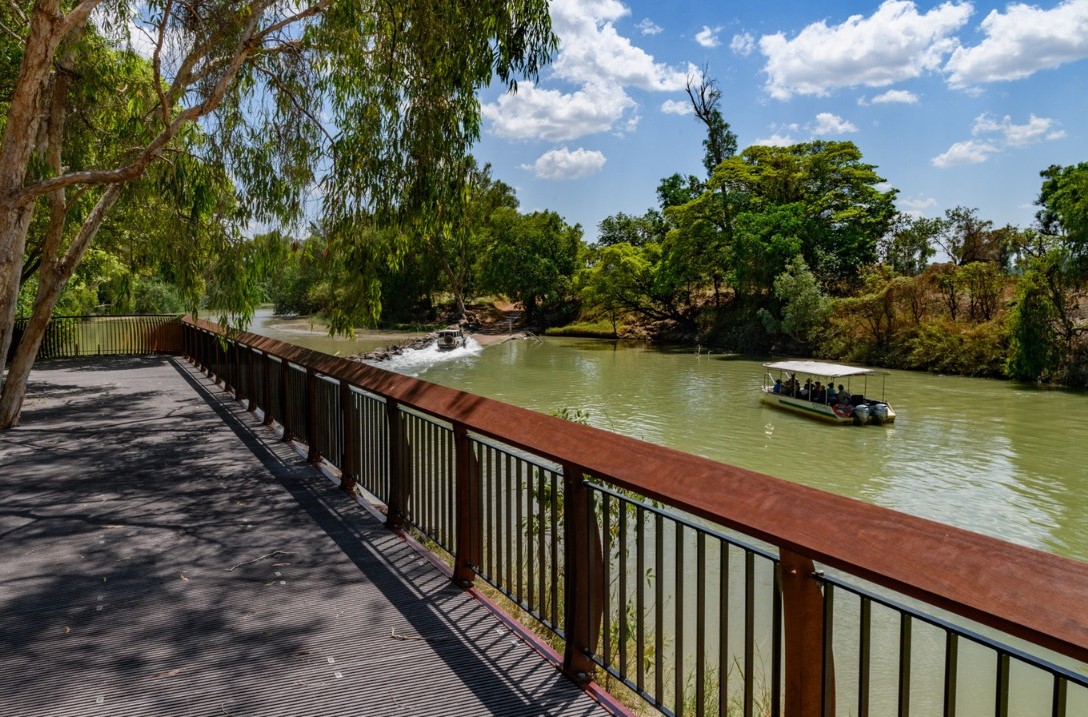
Kakadu National Park's Cahill Crossing Viewing Area reopened in September 2022 following a $3 million upgrade. A picnic area and three new viewing platforms linked by a rainforest walk provide visitors with a safe view of the crocodiles in Kakadu. The infrastructure was designed closely with the region's Traditional Owners to showcase and protect the site's unique environmental and cultural values.The Traditional Owners value Saltwater Crocodiles. Therefore, please respect their wishes by avoiding the water's edge, not crossing by foot and observing them from the viewing platform.
If you'd prefer to experience Cahills Crossing with an experienced operator, you can join one of our 5-Day small group tours which include this crossing in the itinerary and run from May-October. We also run private fishing charters which allow you to bypass the crossing all together and fly directly out to the Cobourg Coastal Camp. If you'd like to know more about this (in)famous crossing or enquire about our tours, please let us know.
This blog offers advice, information, and pictures for general information only. The resources mentioned are a guide only; actual times may vary depending on seasonal conditions. Therefore, it's always best to research thoroughly before your trip, visit the local Bowali Information Centre, observe signs and never take unnecessary risks.
© 2014 Venture North | ABN: 34 142 533 113 | Privacy Policy | Terms & Conditions
Darwin Web Design by Dash Media


